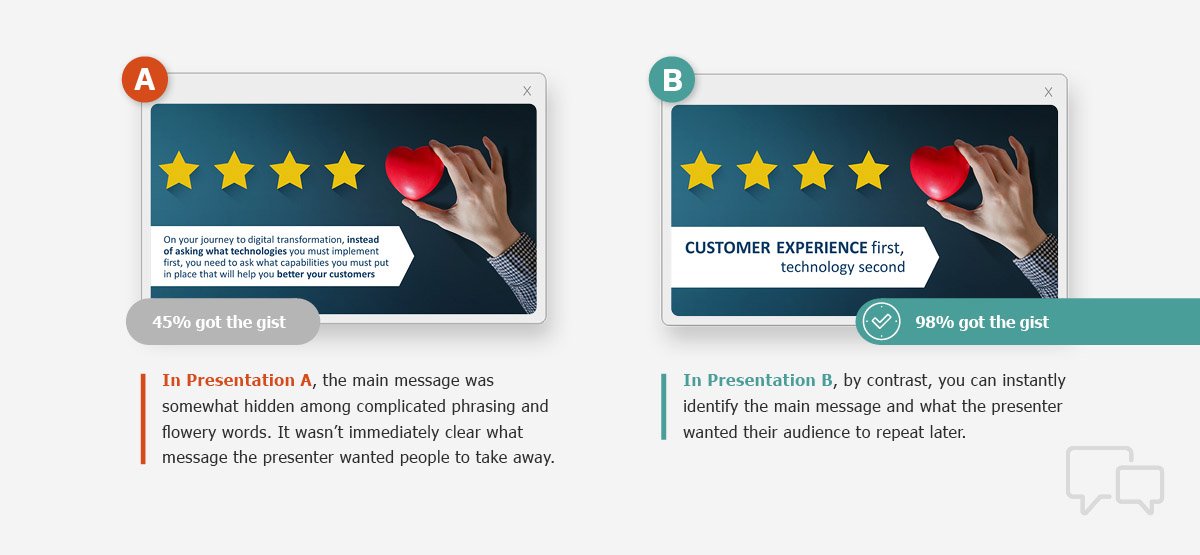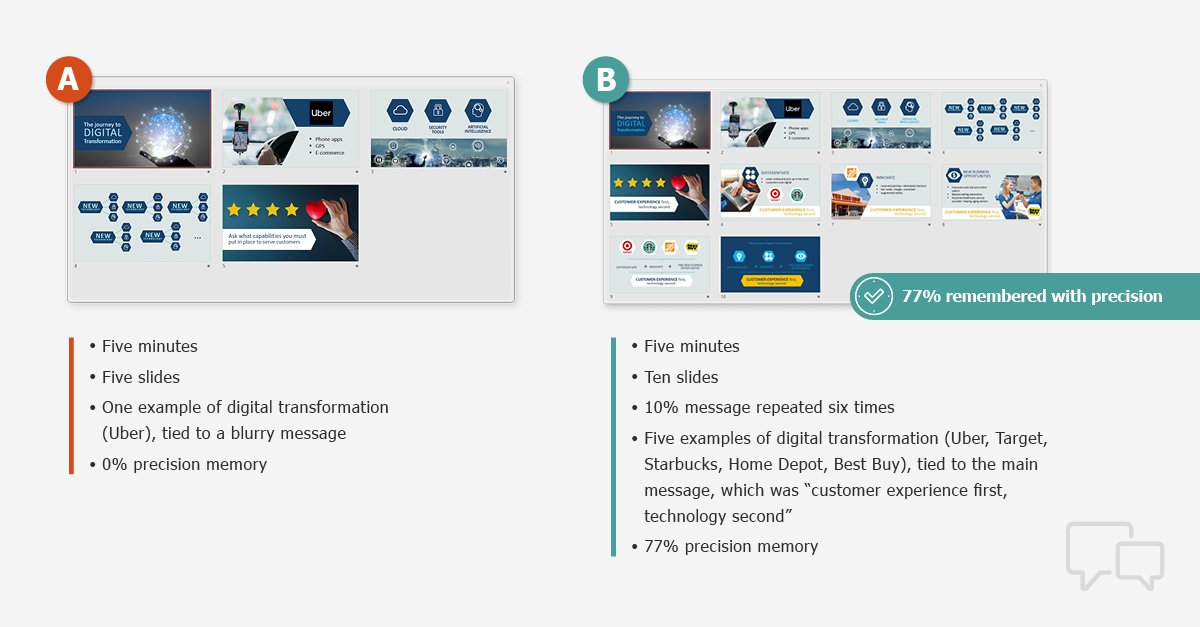
Everyone recognizes the value of storytelling in business. So why is it that most marketing stories don’t move the audience to make buying decisions?
One reason: timidity.
Marketing stories are often cautious, overly rational, and don’t ignite the senses the way a good story should. Our survey results bear this out. 70 percent of B2B marketers agreed or strongly agreed that their stories are based primarily on facts.
This approach might make sense if you think about stories from a purely businesslike perspective. But when you rely too much on facts and data at the expense of emotional elements, you lose the very essence of what a great story is.
Your marketing stories should excite and engage your audience, not put them to sleep. Fortunately, there’s a remedy. You can enrich your marketing stories by incorporating neuroscience principles to make them more engaging, memorable, and persuasive.
Here are three simple, science-based techniques you can apply right away:
1. balance storytelling elements
As a storyteller, you have three elements at your disposal to increase engagement and enhance memorability:
- Perceptive Elements appeal to the senses, like touch, taste, and smell. Using both words and pictures to describe the sensory experience helps your audience more fully engage with your story.
- Cognitive Elements, like facts and data, appeal to logic. These are what most marketers focus on. But facts are difficult to remember on their own.
- Affective Elements appeal to feelings and emotions. Make your audience feel something when they interact with your content.
The best storytellers balance all three of these elements to help their audience experience the story more fully.
For example, when you introduce a business risk or missed opportunity, don’t just talk about the facts. Make sure your audience knows what that loss feels like. Loss Aversion is a powerful psychological motivator. Help them visualize what will happen if they ignore the risk and do nothing.
Telling marketing stories with all three elements creates a more sensory experience that helps embed your story in your buyer’s memory. When they recall the experience of seeing, touching, tasting, and feeling the importance and urgency of your message, they’re more impelled to act on it.
2. elaborate on abstract concepts
Your marketing story’s goal is to help your buyer clearly understand how your solution applies to their situation. But that can be difficult when you’re sharing abstract business concepts. This is where “elaboration” can help.
Elaborating on abstract concepts with familiar examples helps sharpen fuzzy ideas and concepts in your buyer’s mind.
In a series of research studies, we tested how best to communicate the abstract concept of “digital transformation.”
For the study, we compared two variations of the same presentation about digital transformation and measured how well people remembered the information. One presentation clearly outperformed the other—almost everyone got the gist of the message, and over three-quarters of the participants remembered the message with precision.
But what made the difference? Why was one presentation so much more memorable than the other?
a clear, concise, and repeatable message
In Presentation A, the main message was somewhat hidden among complicated phrasing and flowery words. It wasn’t immediately clear what message the presenter wanted people to take away.
In Presentation B, by contrast, you can instantly identify the main message and what the presenter wanted their audience to repeat later.
recognizable examples
Presentation B elaborated on the concept of digital transformation with five examples of digital transformation from well-known brands (Uber, Target, Starbucks, Home Depot, Best Buy).
These examples all supported the main message in Presentation B. As a result, people remembered the message with more precision.
Telling your audience, “Digital transformation can help you innovate” is too abstract, making it difficult to remember. By elaborating with examples of how real companies used technology to improve customer experience, you help your audience understand and remember the concept better.
3. use stories as sidekicks
Stories can stand alone, or you can incorporate them into a broader piece of content, almost like a sidekick, to make your main message more memorable.
One effective way to organize a presentation, for example, is to insert a story or story fragment right before you introduce a more abstract message. That helps elaborate on your topic, which makes it more concrete and memorable.
For example, one widely recognized provider of stock imagery and video wanted creative directors and marketing executives to understand that, by working with them, they could free up their creative teams to do what they did best. Their main message was “Free Your Storytellers to Tell Your Stories.”
This company had some great customer references that directly supported their message. And they put those customer stories right before the slides that included their main message throughout the presentation. The customer stories serve as sidekicks to help illustrate and reinforce their message.
make your marketing stories unforgettable
There’s a well-known maxim in fiction writing: “Show, don’t tell.” It holds equally true in business writing. Don’t rely on facts alone in your marketing stories. Help your audience see and feel how their situation relates to your message. Elaborate on business concepts with recognizable examples. And use customer stories as sidekicks to support your message.
When you feed your buyer’s brain the right balance of storytelling elements, it will hook on, encode the message, and remember to act on it later on.
Get our research report, Making Marketing Memorable, to learn more about these studies and how you can create science-backed marketing content that drives buying decisions.
In this article series, you’ll discover new research and marketing skills to guide your buyers’ decisions in your direction.
Read the other articles in the series:







